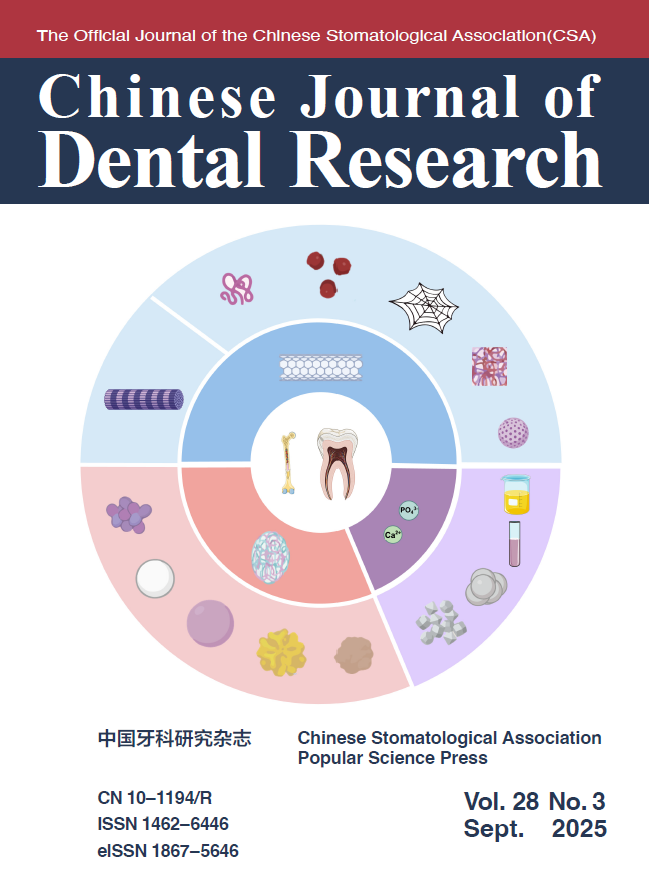|
Objective: To compare the prevalence and morphological characteristics of canalis sinuosus (CS) between unilateral cleft lip and palate (UCLP), bilateral cleft lip and palate (BCLP) and control groups. Methods: The sample consisted of 238 CBCT images (476 sides) from 98 UCLP subjects (196 sides), 36 BCLP subjects (72 sides) and 104 healthy controls (208 sides). Recorded parameters included prevalence of CS, diameter, location of the teeth and adjacent structures. Afterwards, the recorded parameters were compared between the UCLP, BCLP and control groups. Results: The prevalence of CS in the control, UCLP and BCLP groups showed significant differences. The BCLP group revealed a significantly lower prevalence of CS than the UCLP and control groups. There was a considerable increase in CS diameter in the CLP groups compared with the control group. The terminal location of CS was in the canine region for the CLP groups and in the lateral incisor region for the control group. CLP had a significant impact on the location of the end of the CS. CEJB (cementoenamel junction buccal) and CEJL (cementoenamel junction lingual) measurements showed significant differences between the CLP cases and control groups. Conclusion: Different characteristics was revealed between the control, UCLP and BCLP groups. Assessment of CS in patients with CLP with CBCT images is crucial before performing surgical procedures. Keywords: canalis sinuosus, CBCT imaging, cleft lip and palate (editor:CJDR) |
- Chin J Dent Res
CN 10-1194/R . ISSN 1462-6446 . eISSN 1867-5646 . Quarterly 



